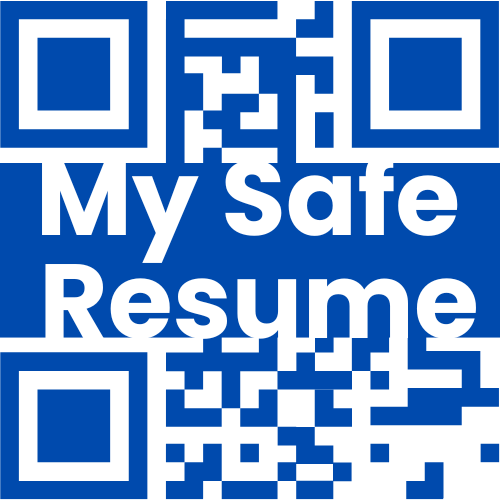Job hunting can be a daunting process, and unfortunately, it’s a prime target for cybercriminals looking to exploit eager job seekers through phishing emails. Phishing is a fraudulent attempt to obtain sensitive information by pretending to be someone trustworthy.
Understanding how to recognize and avoid these scams is crucial for anyone in the job market. This blog provides tips, real-life examples, and resources to help you stay safe.
Six Common Characteristics of Phishing Emails
Recognizing phishing emails can be challenging, but understanding their common traits can help you stay safe. Here are six key characteristics to watch out for:- Generic Greetings: Phishing emails often use generic greetings such as “Dear Sir/Madam” or “Dear User” instead of your name.
- Urgent or Threatening Language: Scammers create a sense of urgency, implying that immediate action is required to avoid negative consequences.
- Suspicious Attachments or Links: Be wary of emails containing attachments or links, especially if they are unexpected. These can contain malware or direct you to a fake website.
- Spelling and Grammar Mistakes: Many phishing emails contain poor spelling and grammar. Legitimate companies usually proofread their communications.
- Unusual Sender Email Address: Check the sender’s email address. Phishing emails often come from addresses that mimic legitimate companies but have slight variations.
- Requests for Personal Information: Legitimate companies rarely ask for sensitive information like passwords or Social Security numbers via email.
Three Real-Life Jobseeker Targeted Phishing Attempts
1. The Fake Job Offer
A jobseeker receives an email offering a high-paying job with minimal effort. The email appears professional, using the company’s logo and official-looking signatures. It states that to proceed, the applicant needs to fill out a form linked in the email, providing personal details like their Social Security number, home address, and banking information for direct deposit. Once the information is submitted, the scammer uses it to commit identity theft and potentially gain access to the victim’s financial accounts.2. The Interview Request
Another common phishing attempt involves an email from someone claiming to be a hiring manager from a reputable company such as “ABC Enterprises.” The email congratulates the recipient on progressing to the interview stage and instructs them to download and install a software application necessary for the virtual interview. The email assures that this is standard procedure for remote interviews. Once the software is downloaded, it installs malware on the victim’s computer, giving the attacker access to sensitive information, including passwords and personal files.3. The Recruitment Agency Scam
A jobseeker receives an email from an entity claiming to be a recruitment agency named “Premier Job Placements.” The email promises to find high-paying jobs quickly and requires an upfront fee for their services. Alternatively, it may ask for personal details like banking information and Social Security numbers to start the job search. The email might include testimonials and success stories to build credibility. However, legitimate recruitment agencies do not charge job seekers. Once the fee is paid or personal information is shared, the scammer disappears, leaving the jobseeker with financial loss or at risk of identity theft.5 Steps to Take if You Receive a Suspicious Email
- Do Not Respond: Do not reply to suspicious emails. Engaging with the sender can lead to further phishing attempts.
- Do Not Click Links or Download Attachments: Avoid clicking on any links or downloading attachments from unknown or suspicious emails.
- Verify the Sender: Contact the company directly using a verified phone number or email address to confirm the email’s legitimacy.
- Report the Email: Report phishing emails to your email provider, and if the email impersonates a specific company, report it to that company as well.
- Delete the Email: Once reported, delete the email from your inbox and your trash folder.
Six Tools and Resources for Detecting and Preventing Phishing
In the fight against phishing, several tools and resources are available to help job seekers identify and prevent potential scams. Here are some effective methods and technologies you can use:- Email Filtering Software: Use email filtering tools to block spam and phishing emails before they reach the inbox.
- Antivirus and Anti-Malware Programs: Keep the antivirus and anti-malware software up to date to protect against malicious downloads and attachments.
- Phishing Awareness Training: Many organizations offer training programs to help individuals recognize and avoid phishing scams. Some recommended programs include ESET Cybersecurity Awareness Training, Hoxhunt KnowBe4, and PhishMe.
- Web Browser Extensions: Use browser extensions like McAfee Web Advisor or Norton Safe Web to help identify and block phishing websites.
- Check URLs Carefully: Hover over links to see the URL before clicking. Look for discrepancies or misspellings in the URL.
- Two-Factor Authentication (2FA): Enable 2FA on the email and other important accounts. This adds an extra layer of security, making it harder for attackers to gain access.
Conclusion
Phishing emails are a significant threat to jobseekers. By being informed and vigilant, one can protect oneself from being a victim of these scams. Always be cautious when receiving unsolicited emails, especially those requesting personal information or urgent action. Utilize available tools and resources to enhance security, and remember that if something seems too good to be true, it probably is. Reference:- https://edition.cnn.com/2003/TECH/internet/07/21/phishing.scam/index.html
- https://www.phishing.org/what-is-phishing
- https://us.norton.com/blog/online-scams/what-is-phishing#:~:text=Senders%20you%20think%20you%20recognize,it’s%20likely%20a%20phishing%20email.
- https://expertinsights.com/insights/the-top-phishing-awareness-training-and-simulation-solutions/
- https://consumer.ftc.gov/articles/job-scams#examples



